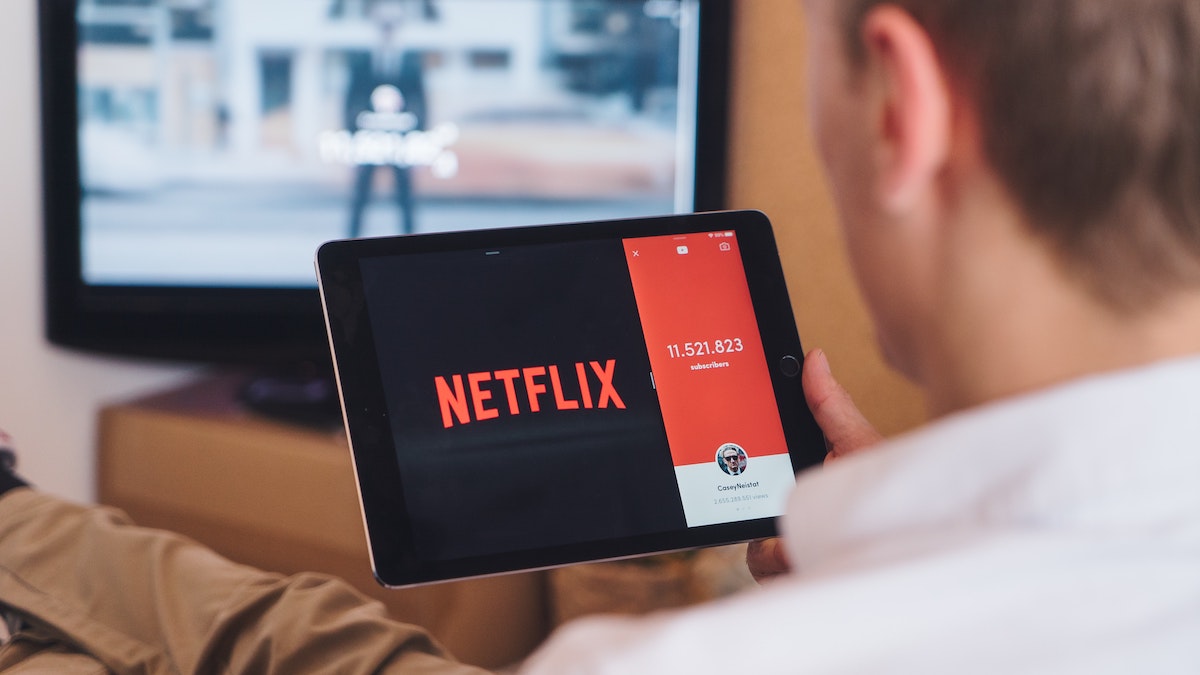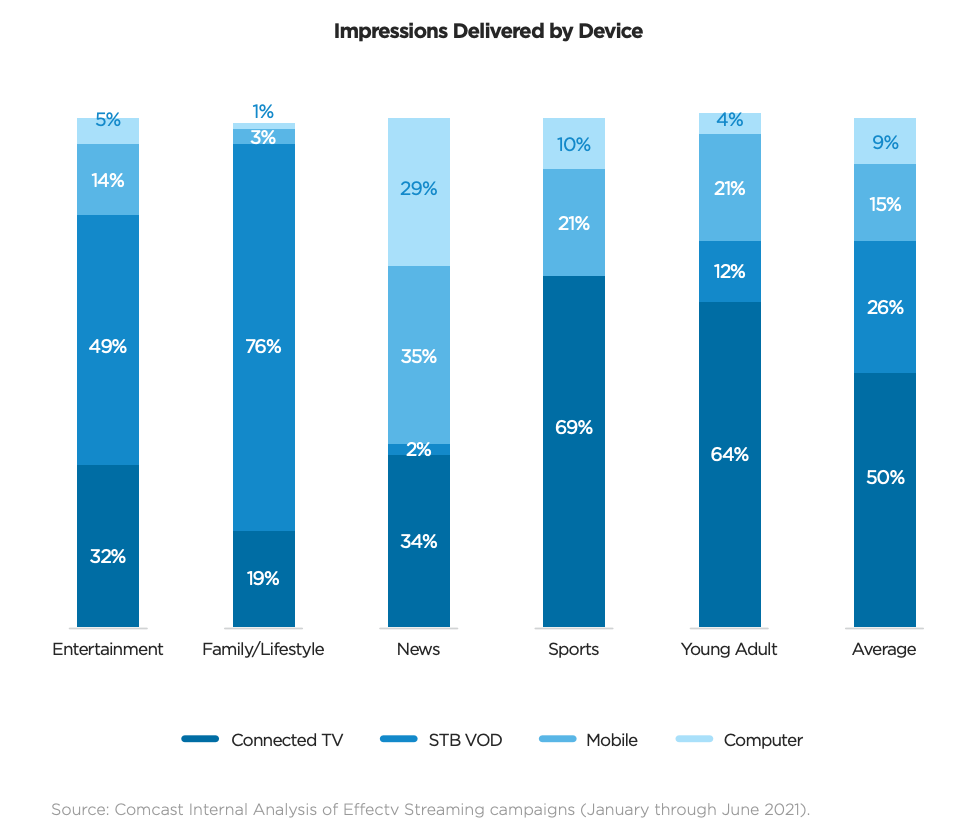A lot of common questions we see from businesses revolve around the use of video in content and advertising.
Video used to be locked away for linear television campaigns, strictly for those with deep pockets and a lot of patience. Today, anyone with a phone can record great content and a commercial to promote their product or service, opening the door for businesses of all sizes. However, the struggle has now shifted to where these promotions will live, and what platforms are best suited for the job.
Multichannel video is more pervasive than ever, so how do we capitalize?
To clear the air on multichannel video, I spoke with Michael Braunstein, Enterprise Director of Advanced TV at Comcast Advertising. He’s an industry vet whose career has grown up with the rapidly evolving video ecosystem, and he’s been a great partner and resource of ChatterBlast since the very beginning. (Editor’s note: As a matter of fact, it’s him who we have to thank for the name ChatterBlast!)
***
Joe: When it comes to video, how do we define content in a way that allows us to activate messages on specific channels?
Michael: For consumers and marketers, the distinctions between “digital video” and “video” are increasingly blurred. Still, different content environments are suitable for different video advertising strategies. For example, consumers scrolling social videos are likely to be on their mobile devices, and less tolerant of long-form content and ads, but there are challenges such as brand safety. Consumers streaming full TV shows and movies are most often at home watching on the big screen and likely to be more receptive to a professionally produced 30-second brand message, but inventory is scarce and has higher costs. As a result, marketers are evolving to decide on the definition of “video” that’s most meaningful to their goals and taking a platform-agnostic approach to reach target audiences, rather than stringing together disparate platforms and partners.
Joe: The industry seems to have gotten more fragmented and complex, but also a bit simpler as providers have made some key updates to their product offerings. How have publishers and content providers adapted to the new multi-channel, blended consumption world we now live in?
Michael: With consumers increasingly demanding content on their own terms, publishers and content creators are reimagining legacy processes and making huge bets. This includes major broadcasters investing in, acquiring, or launching direct-to-consumer (D2C) streaming services (e.g. Comcast acquiring XUMO and launching Peacock) and content being distributed in multiple ways. Over time, it will be interesting to see how media companies balance growing their digital audiences, while supporting healthy legacy channels.
On the advertising side, shifting viewership and content proliferation have sparked tremendous innovation around measurement and activation of cross-platform campaigns. At Comcast Effectv, we continue to study the anonymized, aggregated viewing behaviors of our linear, video on-demand (VOD) and streaming TV audiences to help partners invest in the right mix. In our most recent TV Viewership Report, the data clearly shows the advantages of a multiscreen strategy to maximize engagement.
Viewership is incredibly diverse, even down to the content level.
Image courtesy of Effectv’s latest TV Viewership Report
Joe: From what you’ve mentioned about measurement and activation, it sounds like businesses should be moving away from trying to buy individual platforms, and focus more on a unified audience approach. Can you explain that a bit more?
Michael: By putting the audience at the center of the campaign, a brand moves from relying on content and daypart as proxies, to being able to find target viewers in places and platforms it would have otherwise missed. For us, this is because we’re able to examine the intersection of “content-audience-advertiser” at a more granular level than ever before through “big data” science and make strategic decisions around where and when to serve the ad. Similarly, we can tie ad exposure to outcomes giving partners valuable insights for understanding their campaign’s impact across the funnel.
To put this into practice, seek partners who can put your target audience at the center, then activate a campaign capable of automatically optimizing across live linear, VOD and connected TV (CTV) with a single impression goal, and CPM (cost per thousand impressions). These kinds of impression-based campaigns are what we’ve been working towards at Comcast Advertising and Effectv, and we’re executing them successfully right now for our partners.
Joe: Of course, we have to talk about cost. Advanced TV is a lot more affordable than what it used to be, but how can a brand flex its muscles if it’s limited by budget?
Michael: Brands may decide to budget, build creative, and deploy tactics in a one-size-fits-all approach, but when possible, they should consider more customized activations and build strategies around the different environments of digital video content. With smaller budgets to test an audience-based video campaign, look for partners who can deliver reach and measurement across multiple platforms simultaneously, not just in silos like “linear broadcast only,” “linear cable only,” “CTV only,” or “social only.”
There are other considerations for where to invest in an over-the-top (OTT) video campaign. Marketers should ask: What first-party data powers the solution? What level of transparency will I be able to see? How scaled is the solution? How diverse is that scale? What technology is used to serve the ad to the right household an acceptable number of times?
Our 2H 2021 #TVviewership Report is here! Our latest edition provides an ongoing benchmark to help marketers use TV’s reach and precision to be more effective in delivering results than ever before. Learn more by downloading the report now: https://t.co/65CQG1Z3o4 pic.twitter.com/HB9OhdaFkE
— Effectv (@effectv) March 30, 2022
Joe: In terms of planning, inventory and data, what should we expect from a partner with integrated platforms?
Michael: Partners who provide recommendations powered by first-party data signals in a fully privacy compliant manner are the ones to invest with. At Comcast Effectv, we’re fortunate to have fully anonymized unique household and device-level viewership data across live linear, VOD and CTV to inform planning and measure campaigns. This allows us to show brands incremental reach and frequency against multiple audiences and perform household-level brand lift and lower-funnel sales impact studies. The actual amount of long-form TV quality streaming inventory is scarce, so it’s important to partner with trusted media companies who can enable direct access to their audiences.
Publishers and multichannel video programming distributors (MVPDs) like Comcast have proprietary distribution agreements with programmers, which include guaranteed ad rights. These are impressions no one else can offer. With Comcast Advertising and Effectv, marketers benefit from direct access to a vast pool of verified, premium inventory across live linear CTV, Set-Top Box VOD, and TV Everywhere platforms. And an OTT strategy is only as strong as the data behind it. We use insights from viewing behaviors across platforms to inform delivery against target audiences. We then aggregate anonymized household-level ad exposures for campaign attribution and brand lift measurement, giving our partners that full-funnel insight into performance.
***
As an industry, we’re moving away from silos and towards unified audiences. The past two decades of digital have set the stage and served as a testing ground as that transition took shape, and the 2020s will surely usher in a strong focus around anonymized, high-quality data to drive business impact.
As always, if you have any questions about how to navigate multichannel video, or advertising in general, ChatterBlast Media is more than equipped and ready to help.





